Our great grandparents were told to watch out that the typewriter did not destroy penmanship and their much greater grandparents were told that the printing press would do the same.
So it goes. I haven't yet seen complaints that ten-finger qwerty keyboarding is giving way to text-thumbing and writing via touch-screen, but of course it is and I'll not be surprised when a complaint is made of it.
Just to show there's no trend without its counter, a new service called celery is trying to entice the fountain-pen generation to subscribe to a service that converts their scrawls to tweets.
All this is mere excuse for an opportunity to show off some artful writing of the seventeenth century.
Here's the signature of a man named John Collins, who taught writing before making himself indispensable as a disseminator of mathematical advances in the time of Newton.

And here a bit of clerkly writing in which Collins petitions for recovering of a long-overdue government pension.

This is Isaac Newton addressing a complimentary letter to Collins in which he answers some thorny mathematical questions.

These are some anonymous samples, respectively, from 1623, 1653, 1667, 1670, and 1675..





This is a detail from the example of 1667.

Although seventeenth-century folk might learn to read when young, they weren't likely to take up writing until years later. When the time came, there were many pen-men to give them instruction and some of these men prepared elegant teaching texts to smooth the way. One of the best was Martin Billingsley, whose book, The Pens Excellencie or the Secretaries Delighte, of 1618 became a model for most that followed. He described the principal hands, including Secretary, Bastard-Secretary, Roman, Italian, Court, Chancery, with their variations (e.g., sett, facill, and fast Secretary). He gave their principal uses and then, of course, showed how they were made.
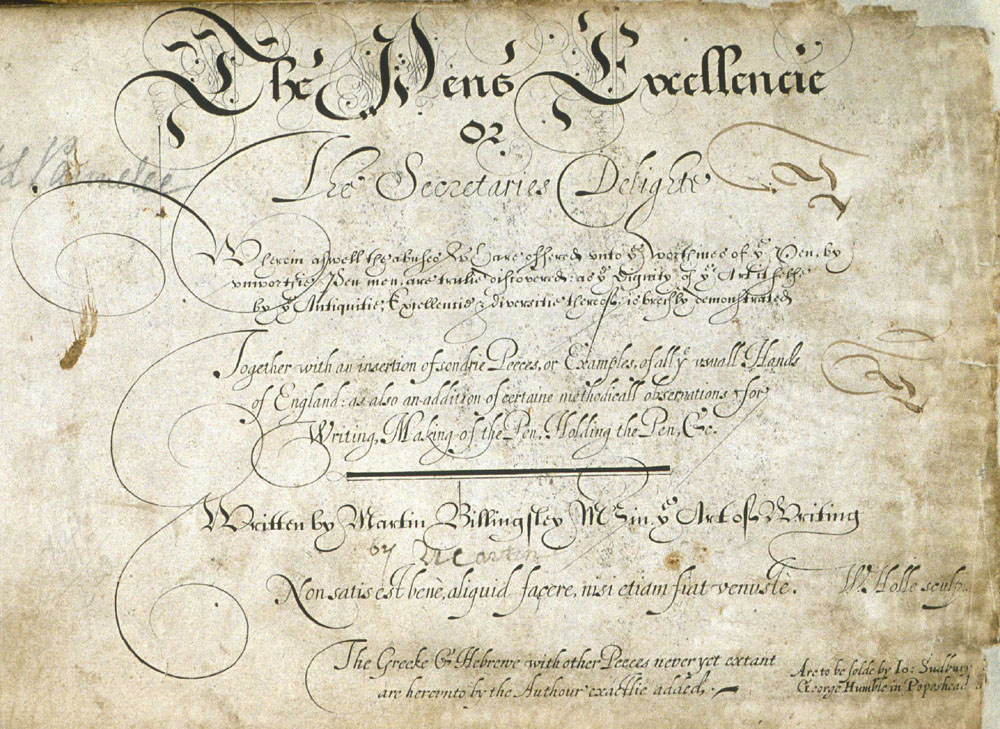
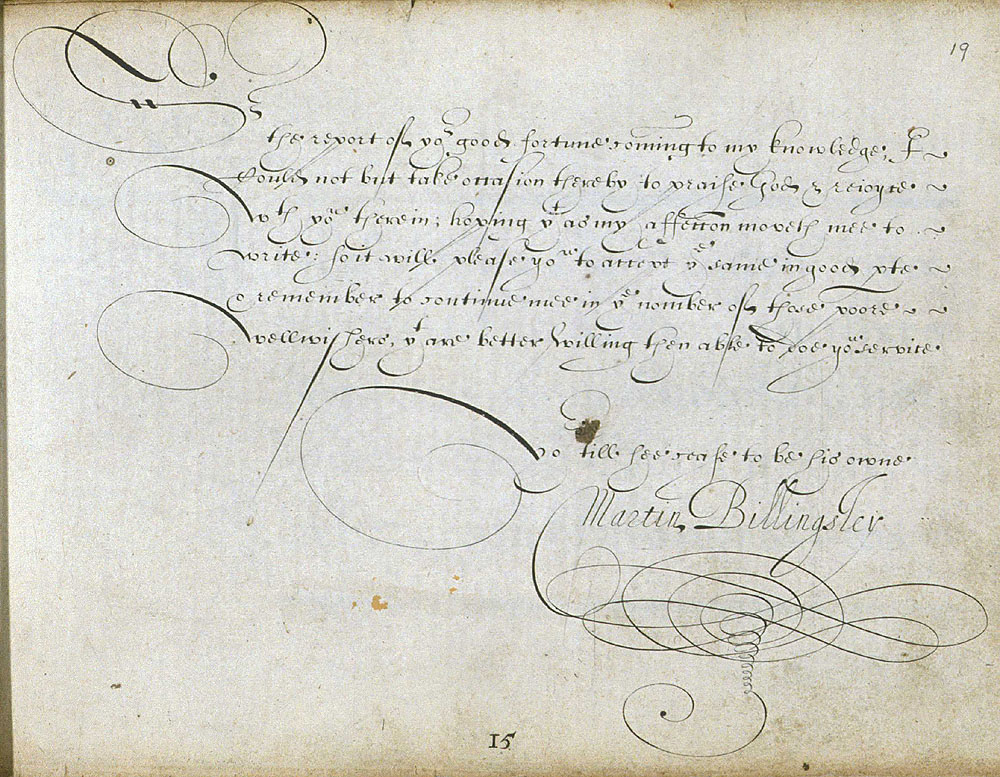
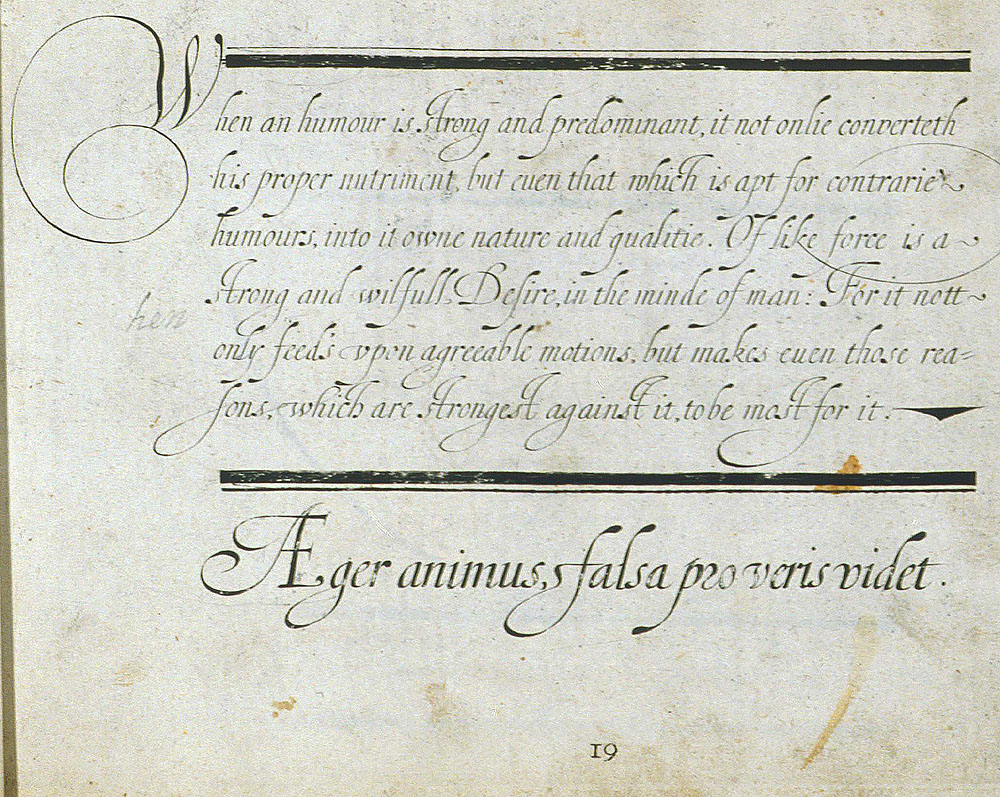
The English Renaissance Electronic Service of Cambridge University gives both the preceding page scans and the following re-creations from Billingsley's plates:
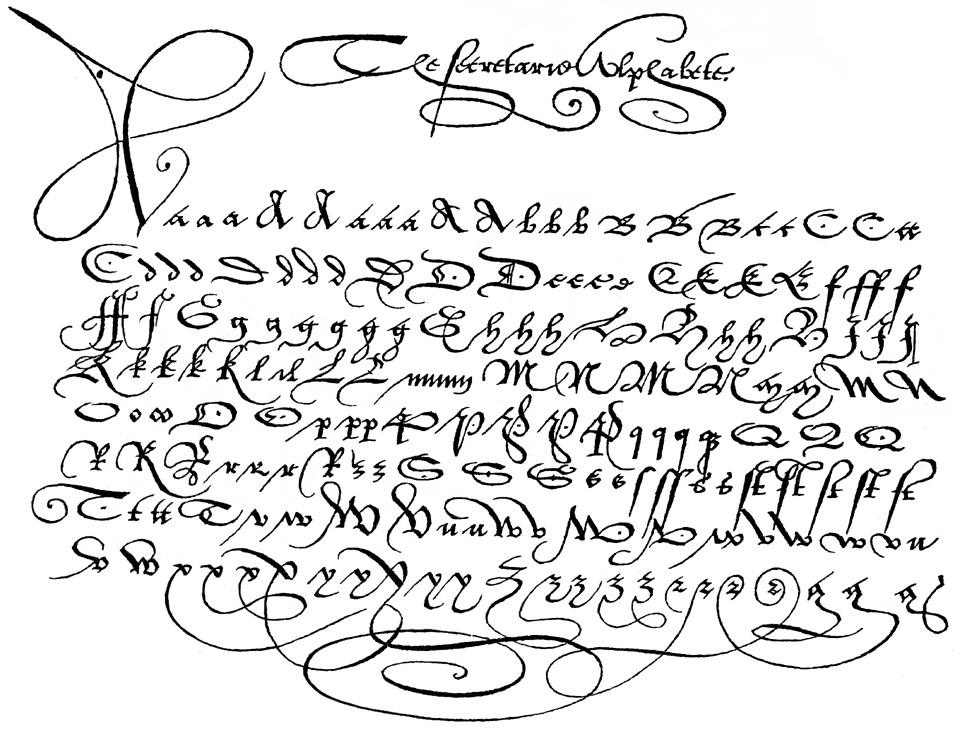
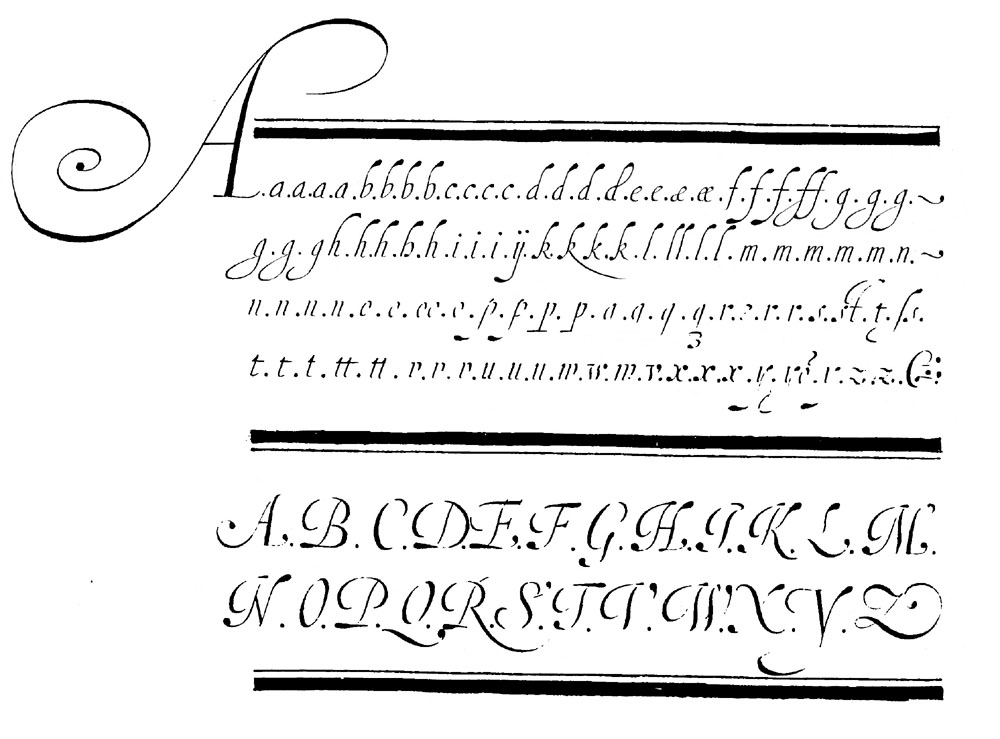
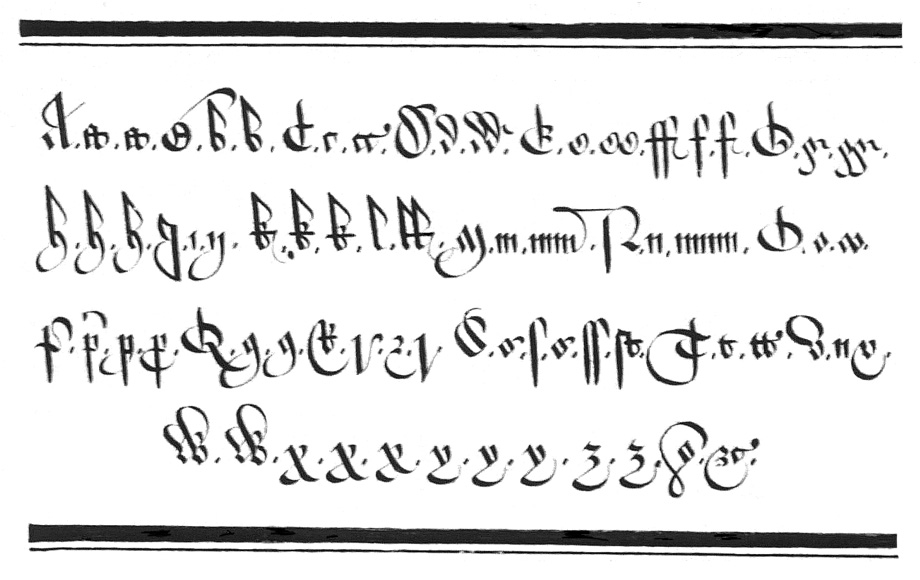
While at all times there are those who write with elegance and clarity and those who scrawl with varying legibility, there seem to have been more who wrote with pride, like Collins and Newton, in the seventeenth and more who wrote less artfully, like Boswell whose hand is shown below, in the eighteenth and onward.

Note:
* for example:
The theory and practice of handwriting, a practical manual for the guidance of school boards, teachers, and students of the art, with diagrams and illustrations, by John Jackson (W.B. Harison, 1894)
The reign of the manuscript by Perry Wayland Sinks (R. G. Badger, 1917)
Year Books of Richard II: 12 Richard II, 1388-1389, Volume 6 of Year Books of Richard II, edited by George Feairheller Deiser (Harvard University Press, 1914)
The origin and progress of the art of writing, a connected narrative of the development of the art, by Henry Noel Humphreys (Ingram, Cooke, 1853)
Pitman's journal of commercial education, Volume 66 (1907)




No comments:
Post a Comment